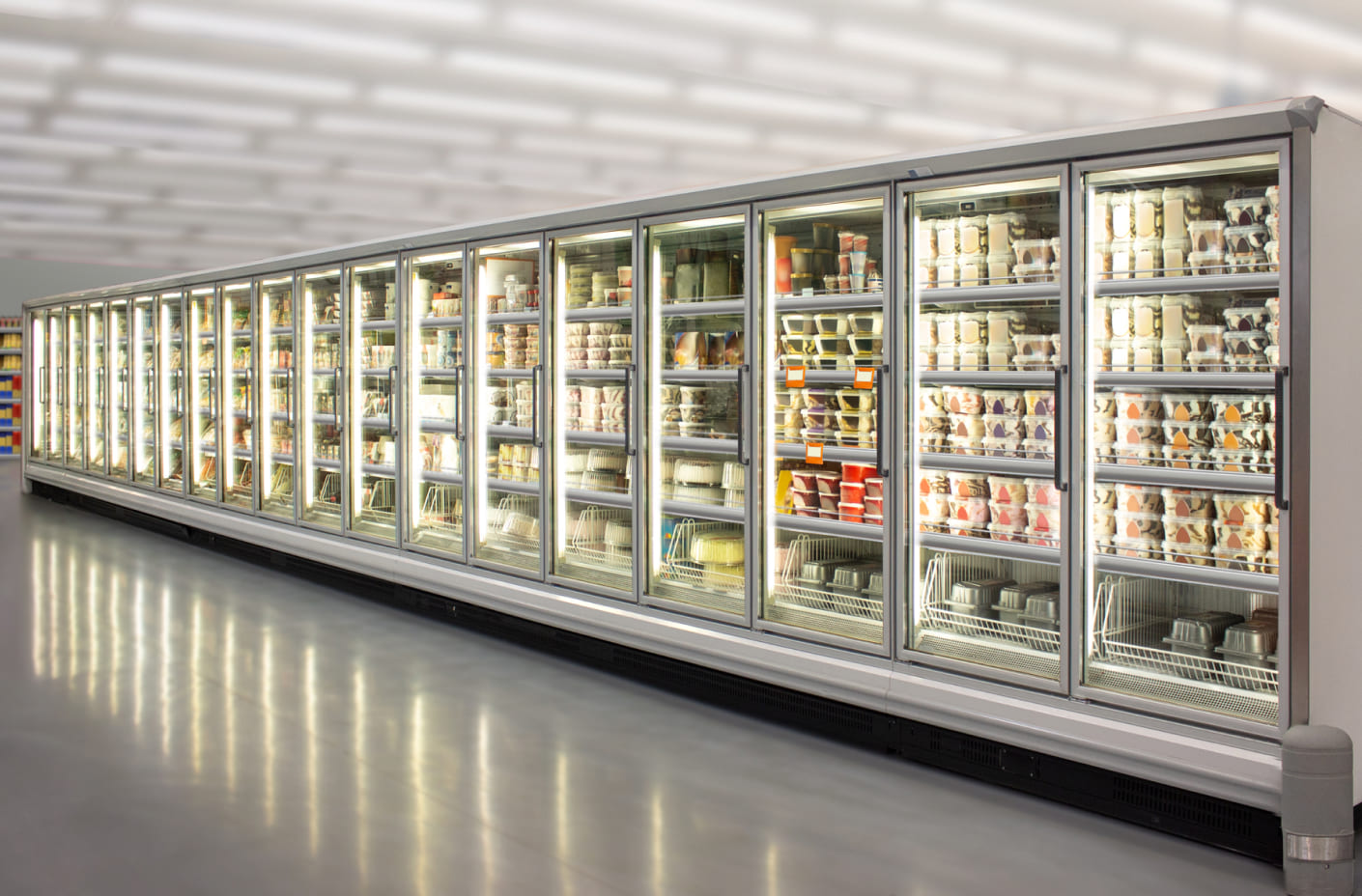Optimizing Performance: Commercial Refrigeration Fixing Techniques for Cost-Effective Solutions

Assessing Refrigeration System Efficiency
To effectively evaluate the performance of an industrial refrigeration system, it is crucial to conduct extensive evaluations of its operational parameters and crucial parts. The initial step in assessing system performance is examining the functionality of the compressor.
Furthermore, examining the condenser and evaporator coils is vital. Clogged or dirty coils can substantially affect the system's effectiveness by hindering heat transfer processes. Cleaning the coils on a regular basis and making sure appropriate air flow around them can enhance the system's air conditioning capability and reduce power intake. Monitoring refrigerant degrees and stress is likewise vital in evaluating system performance. Low refrigerant degrees or uncommon stress can suggest leakages or malfunctioning components that require immediate attention to protect against system failings and pricey repairs. By systematically assessing these vital elements and operational parameters, companies can guarantee their industrial refrigeration systems run at peak efficiency degrees, minimizing downtime and making best use of energy performance.

Executing Preventative Maintenance Actions
Examining the performance of a commercial refrigeration system gives useful insights that can educate the application of preventative maintenance steps crucial for sustaining optimum performance and longevity. Preventative upkeep is a positive method aimed at determining and attending to prospective problems before they escalate into costly issues that interrupt operations. By establishing a normal maintenance routine, refrigeration systems can run successfully, decreasing energy consumption and decreasing the risk of unforeseen breakdowns. Trick preventative upkeep procedures include cleansing and inspecting condenser coils, checking cooling agent levels, ensuring proper air movement, and adjusting temperature controls. In addition, checking temperature level and moisture levels, inspecting door seals, and dealing with any uncommon noises or odors quickly are crucial steps in preventative upkeep. Executing these measures not just expands the life-span of the equipment but also improves food safety and security by maintaining regular storage space temperatures. Inevitably, purchasing preventative upkeep steps is a cost-efficient method that assists businesses avoid expensive repairs and downtime, guaranteeing continuous and trustworthy refrigeration system performance.
Identifying Common Refrigeration Issues
Among the key facets in maintaining commercial refrigeration systems is without delay determining common concerns that may arise throughout their operation. One common problem is insufficient cooling, usually triggered by unclean condenser coils or a malfunctioning compressor. Routine cleaning of the condenser coils and guaranteeing correct ventilation around the device can help avoid this problem. Another typical concern is refrigerant leaks, which can cause ineffective cooling and possible ecological risks. Checking refrigerant degrees and conducting routine examinations for leaks can help mitigate this issue. Additionally, defective gaskets on doors, causing air leakages, can trigger the refrigeration system to function harder to maintain the preferred temperature level. Regular examination and replacement of damaged gaskets are necessary to stay clear of energy waste. Uncommon sounds such as knocking, clanking, or hissing can show underlying mechanical concerns that require prompt attention to protect against more damages. By promptly identifying and addressing these typical refrigeration problems, companies can guarantee the effective procedure of find this their systems and minimize costly repairs.
Using Energy-Efficient Repair Strategies
When taking into consideration industrial refrigeration repair, carrying out energy-efficient techniques is extremely important to optimizing the system's performance and minimizing operational prices. Among the crucial strategies in attaining energy performance is guaranteeing that the refrigeration system is properly preserved. Regular upkeep, such as cleaning condenser coils, inspecting for cooling agent leaks, and adjusting temperature setups, can substantially boost energy effectiveness.
An additional energy-efficient repair service technique is upgrading to high-efficiency parts - commercial refrigerator repair. By changing older, less efficient get rid of energy-efficient options, such as ECM follower electric motors see this website or LED lighting, services can lower energy intake and reduced energy costs. Furthermore, setting up programmable thermostats and power management systems can help control temperature levels better, avoiding unneeded power use
Moreover, optimizing the system's insulation and sealing any leakages can additionally add to energy cost savings. Appropriate insulation helps preserve constant temperature levels within the refrigeration unit, lowering the workload on the system and boosting total performance. By integrating these energy-efficient repair service methods, companies can not only reduce their environmental effect but additionally attain lasting expense savings.
Optimizing Refrigeration System Life-span
To ensure the long life and optimal efficiency of industrial refrigeration systems, keeping energy-efficient repair work techniques is necessary, with a focus currently shifting in the direction of optimizing the refrigeration system lifespan. Enhancing the life-span of a refrigeration system involves aggressive maintenance, timely fixings, and adherence to maker guidelines.
Furthermore, investing in premium components and components throughout repairs and substitutes can enhance the resilience of the refrigeration system. By prioritizing aggressive maintenance and using high quality components, businesses can enhance the life expectancy of their industrial refrigeration systems, ultimately decreasing downtime and operational prices.
Conclusion
Finally, by regularly assessing refrigeration system performance, implementing preventative maintenance actions, determining usual refrigeration issues, making use of energy-efficient repair work methods, and maximizing the system's lifespan, services can make the most of efficiency and lower prices connected with business refrigeration repair. These affordable remedies help to make sure that refrigeration systems run at peak efficiency, ultimately resulting in boosted performance and profitability for companies over time.

When taking into consideration commercial refrigeration repair service, applying energy-efficient techniques is critical to maximizing the system's performance and minimizing functional prices.To ensure the durability and ideal efficiency of commercial refrigeration systems, preserving energy-efficient repair service techniques is crucial, with a focus now moving in the direction of taking full advantage of the refrigeration system life-span. Maximizing the life-span of a refrigeration system involves proactive maintenance, timely repair services, and adherence to maker standards.